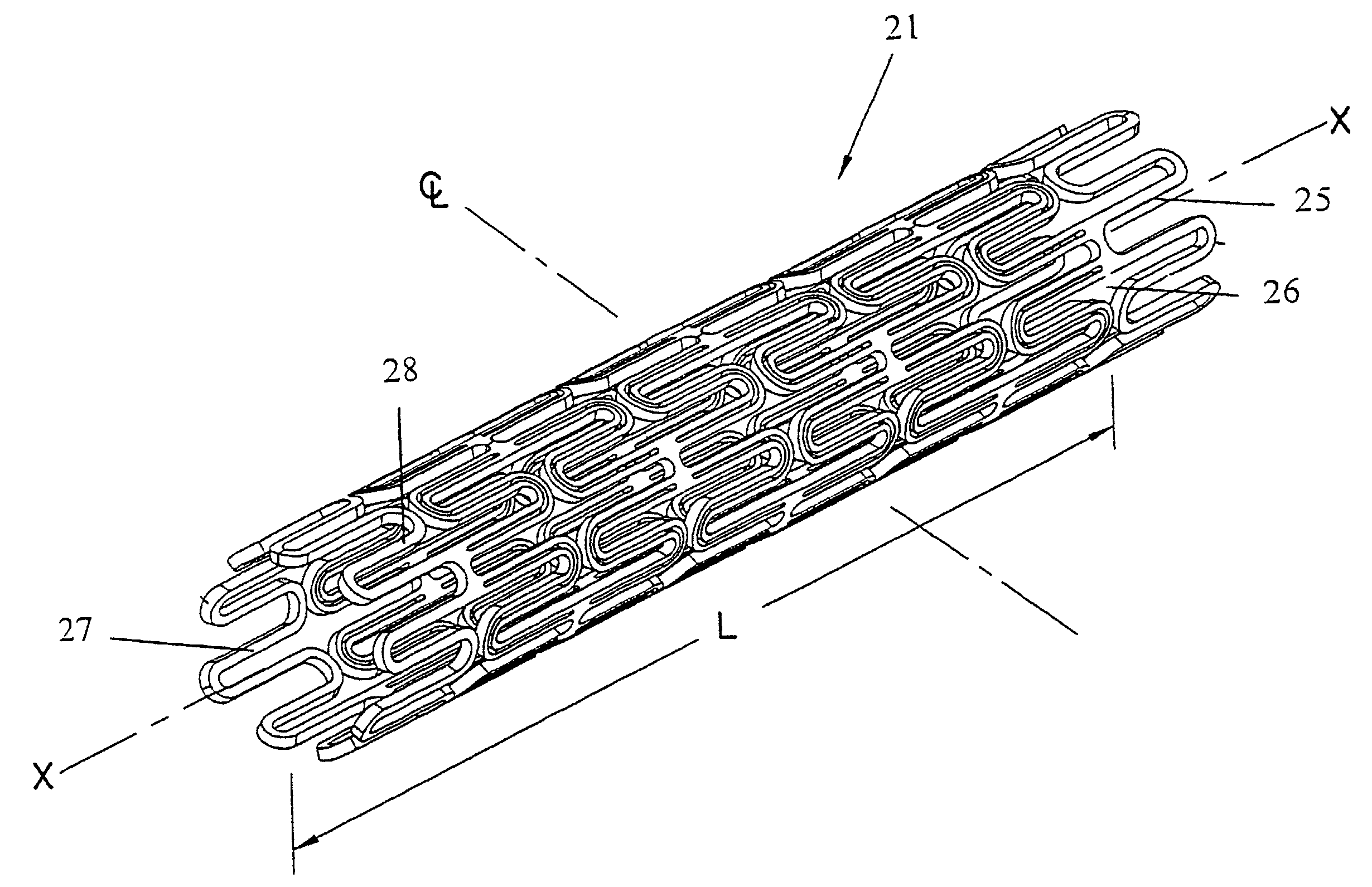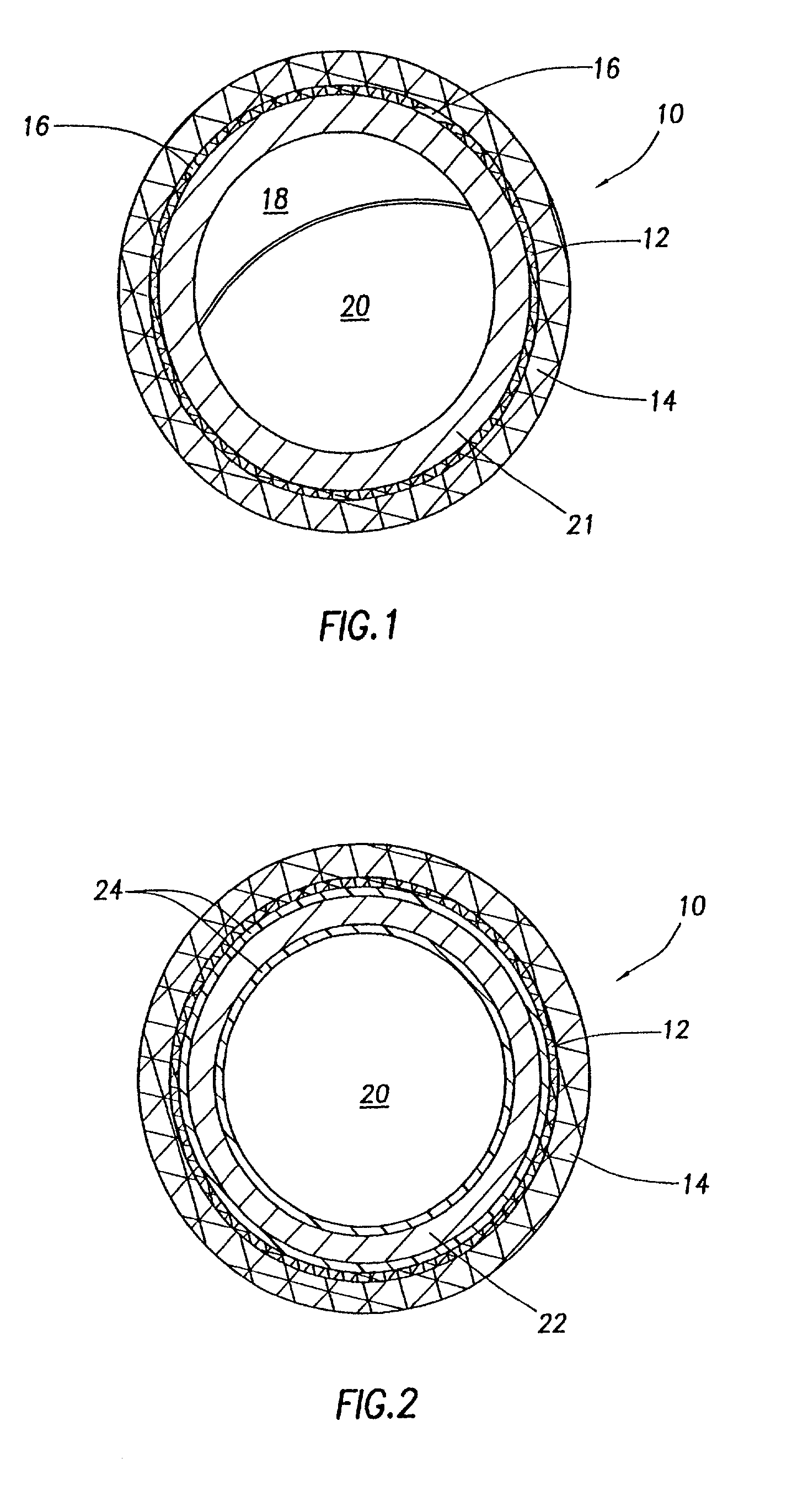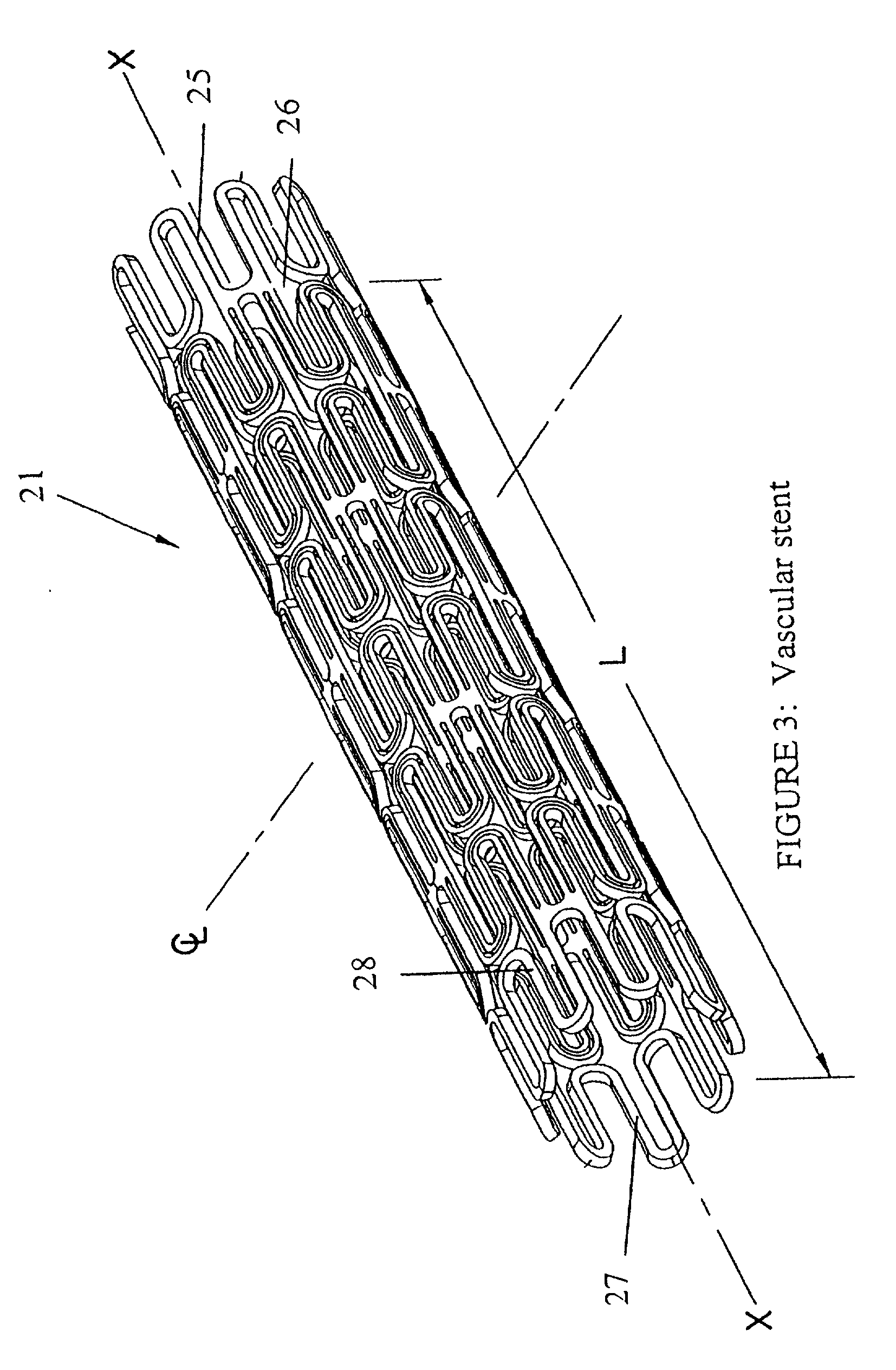Liquid and low melting coatings for stents
a coating and liquid technology, applied in the field of coating stents, can solve the problems of stents located within the lumen of the body not always preventing partial or complete restenosis, both types of coatings are susceptible to breaking and cracking, etc., and achieves enhanced adhesion of coatings, low boiling point, and easy removal
- Summary
- Abstract
- Description
- Claims
- Application Information
AI Technical Summary
Benefits of technology
Problems solved by technology
Method used
Image
Examples
example 1
[0086] 100 mg EVA (ethylene-vinyl acetate) polymer and 10 mg of cerivastatin were dissolved in 10 ml methylene chloride solution at room temperature. The solution was poured onto a glass plate and the solvent was allowed to evaporate for 12-24 hours. After almost complete removal of the solvent, the cerivastatin-loaded EVA film was removed from the glass plate and was cut to 1.5 cm by 1.5 cm size. The film was mounted on a Palmaz-Schatz coronary endovascular stent. Control EVA films were prepared in the following manner: 100 mg EVA polymer was dissolved in 10 ml methylene cloride solution at room temperature. The solution was poured onto a glass plate and the solvent was allowed to evaporate for 12-24 hours. After almost complete removal of the solvent, the control EVA film was removed from the glass plate and was cut to 1.5 cm by 1.5 cm size. The control film was mounted on a Palmaz-Schatz coronary endovascular stent. Release profiles were obtained for the coated stents.
example 2
[0087] A 10% w / w solution of cerivastatin in vitamin E was created by the following method. Four (4) mg of cerivastatin was dissolved in one hundred (100) .mu.l of methylene chloride. This solution was added to 36 mg of liquid vitamin E and mixed manually by stirring. The solution was allowed to stand at room temperature for one hour to enable the methylene chloride to evaporate from the solution. The resulting cerivastatin / vitamin E mixture was used to coat three "Protge" stents by simple surface application. Approximately 10-12 mg of vitamin E and drug was deposited on each stent.
example 3
[0088] A coated stent prepared according to Examples 1 and 2 is immersed in an Eppendorf tube containing 1 ml phosphate buffered saline (PBS) and incubated on a rotator in a 37.degree. C. oven. Buffer exchanges are performed at 1, 2, and 4 days following immersion in PBS. Collected samples are assayed for rifampin concentration using a UV-VIS spectrophotometer.
PUM
| Property | Measurement | Unit |
|---|---|---|
| melting point | aaaaa | aaaaa |
| melting point | aaaaa | aaaaa |
| viscosity | aaaaa | aaaaa |
Abstract
Description
Claims
Application Information
 Login to View More
Login to View More - R&D
- Intellectual Property
- Life Sciences
- Materials
- Tech Scout
- Unparalleled Data Quality
- Higher Quality Content
- 60% Fewer Hallucinations
Browse by: Latest US Patents, China's latest patents, Technical Efficacy Thesaurus, Application Domain, Technology Topic, Popular Technical Reports.
© 2025 PatSnap. All rights reserved.Legal|Privacy policy|Modern Slavery Act Transparency Statement|Sitemap|About US| Contact US: help@patsnap.com



